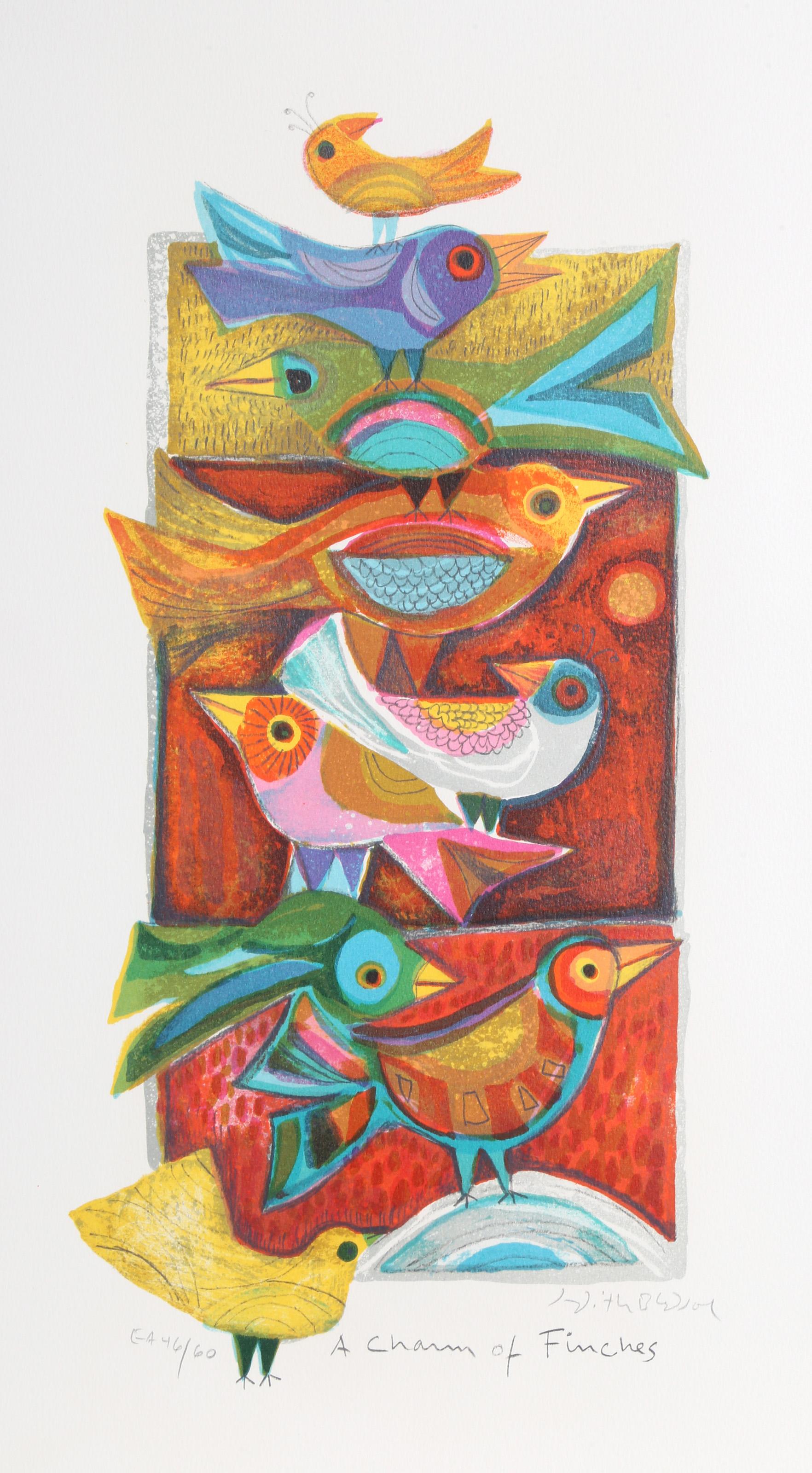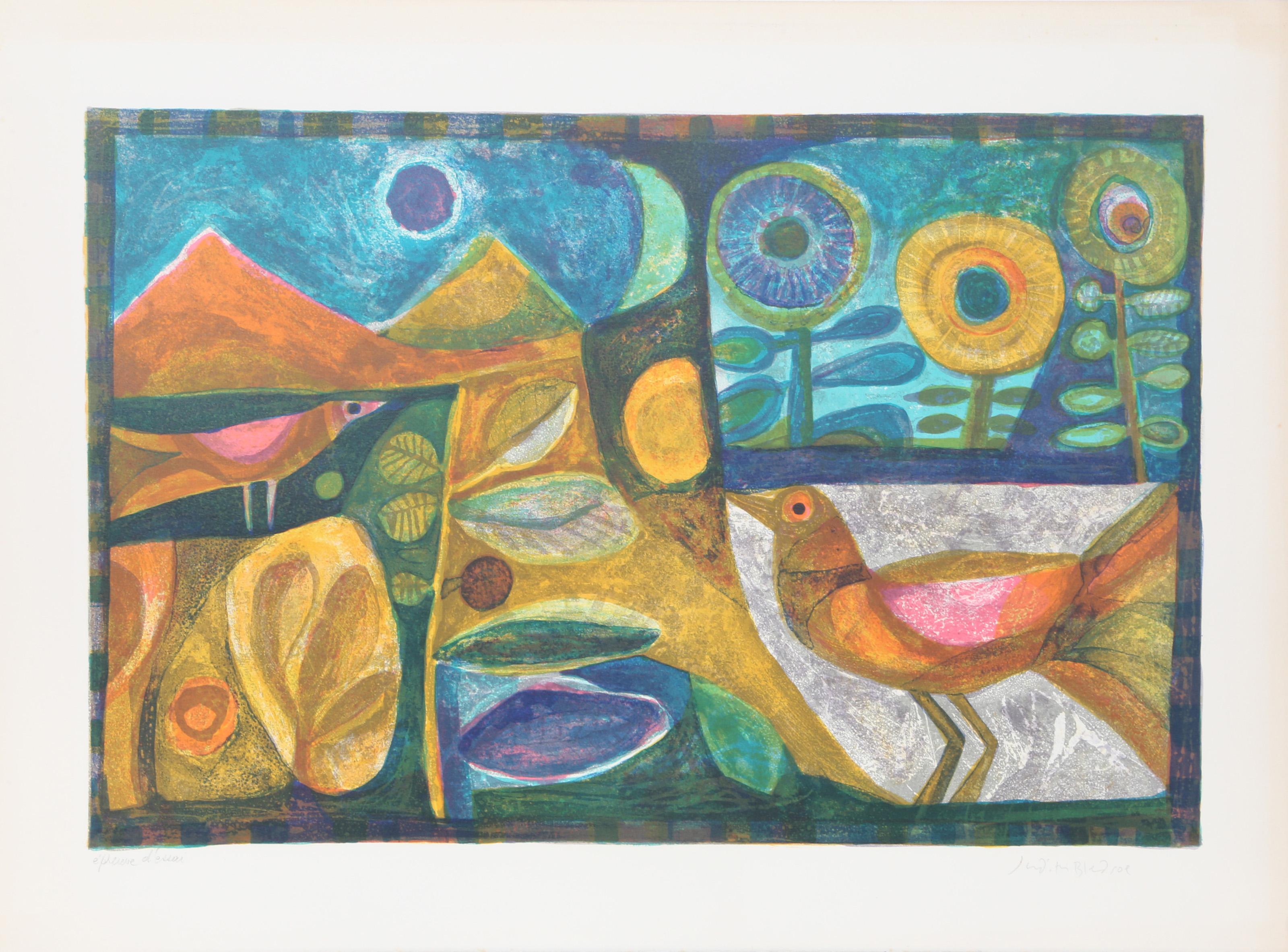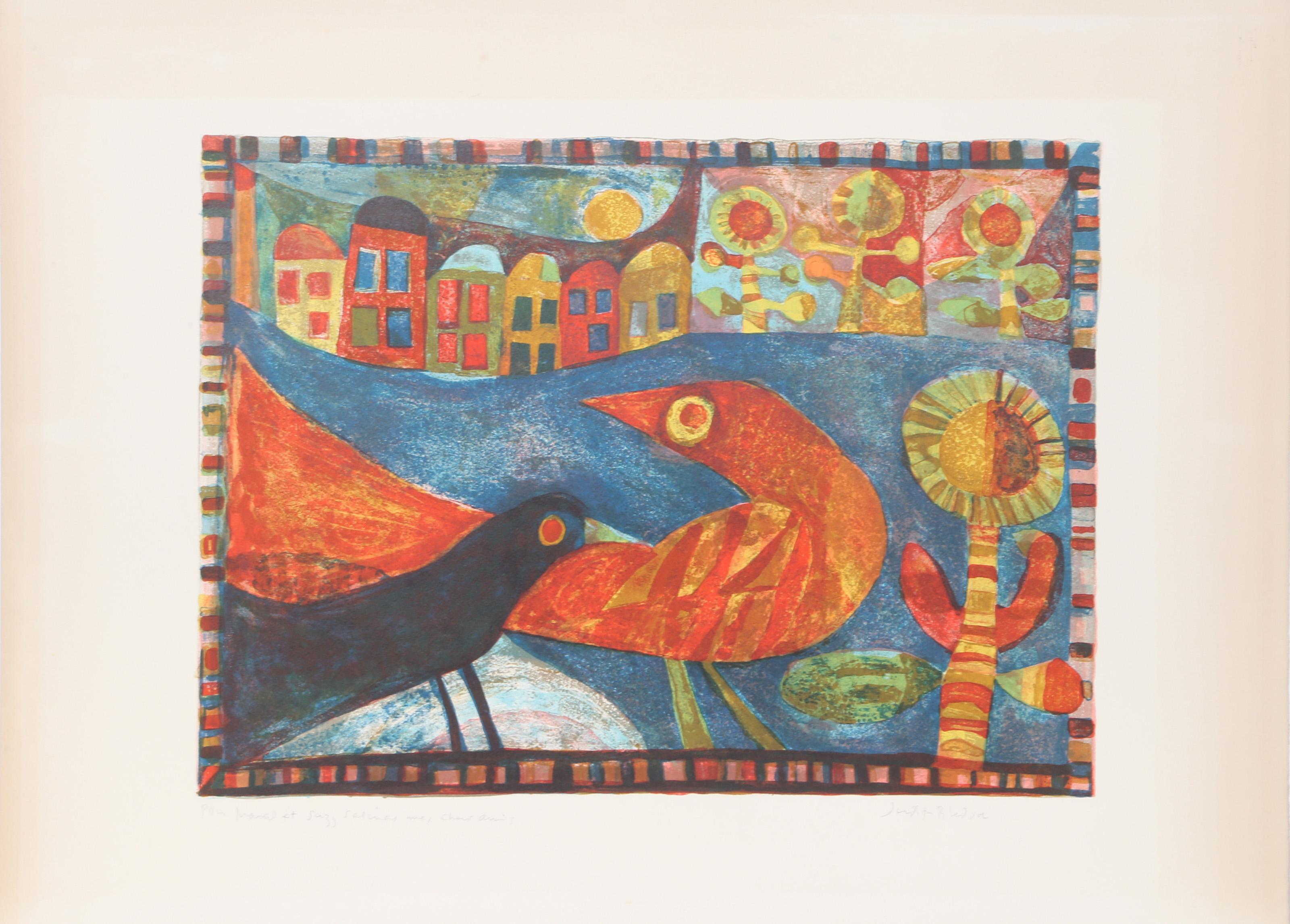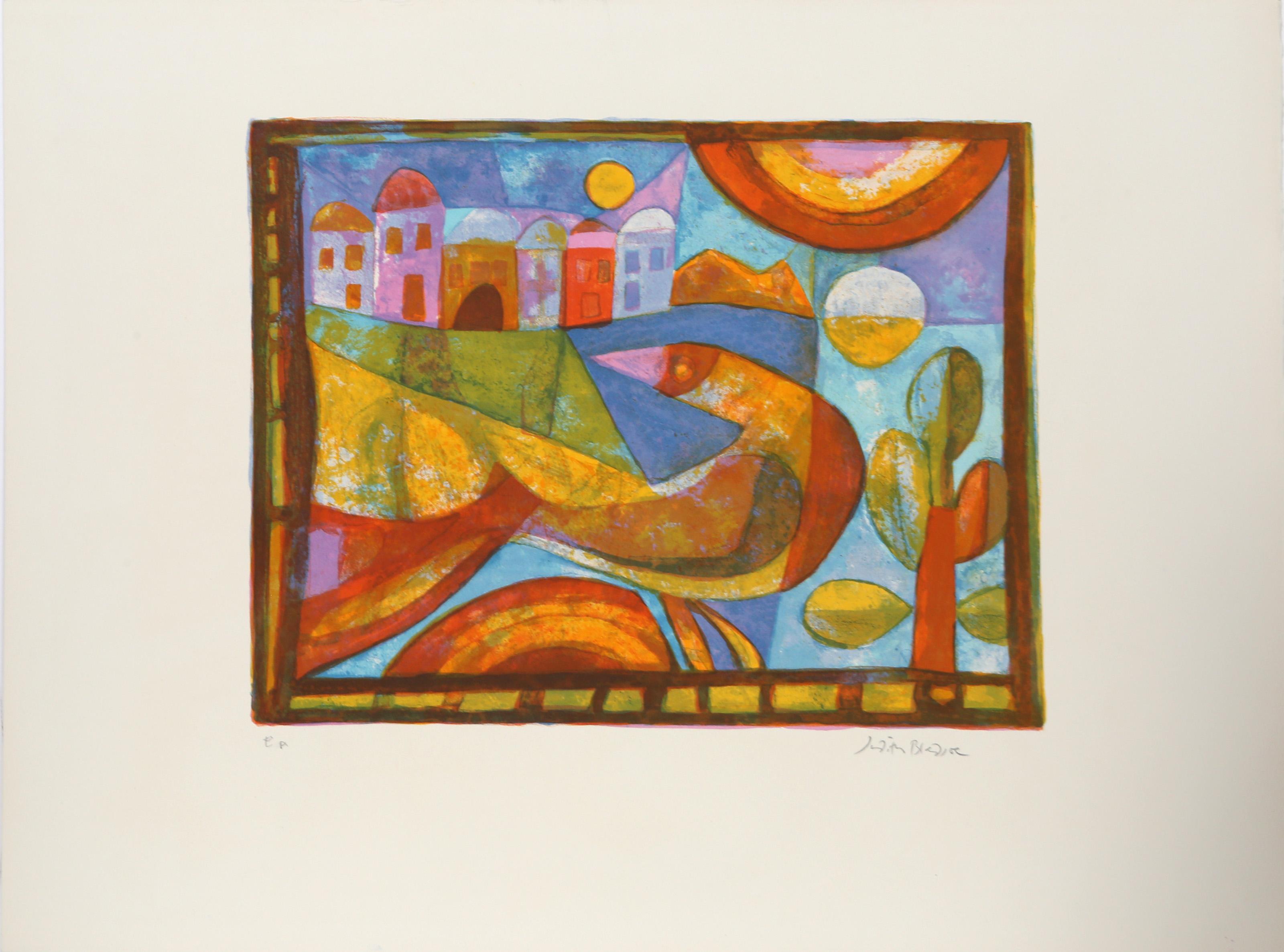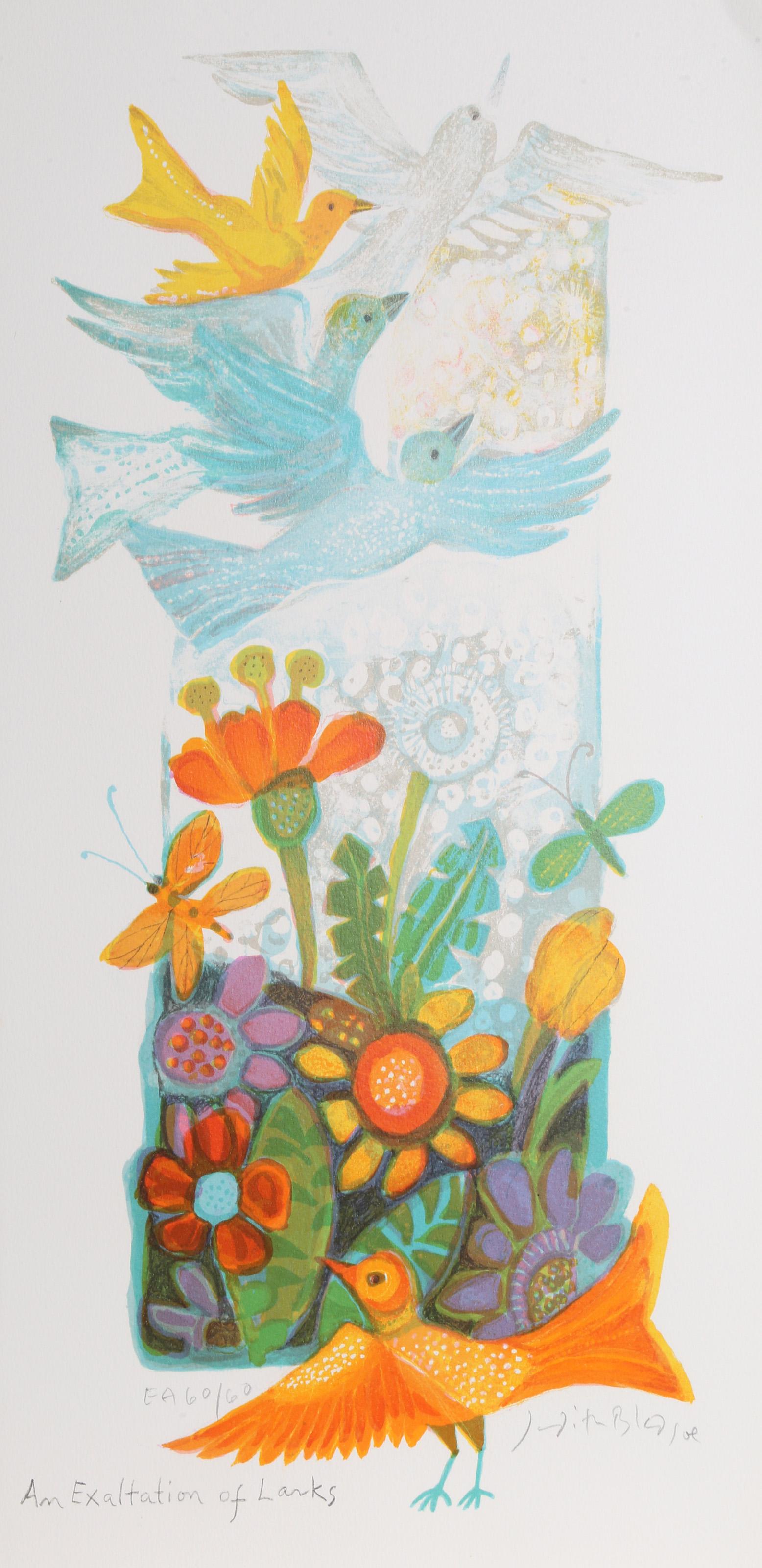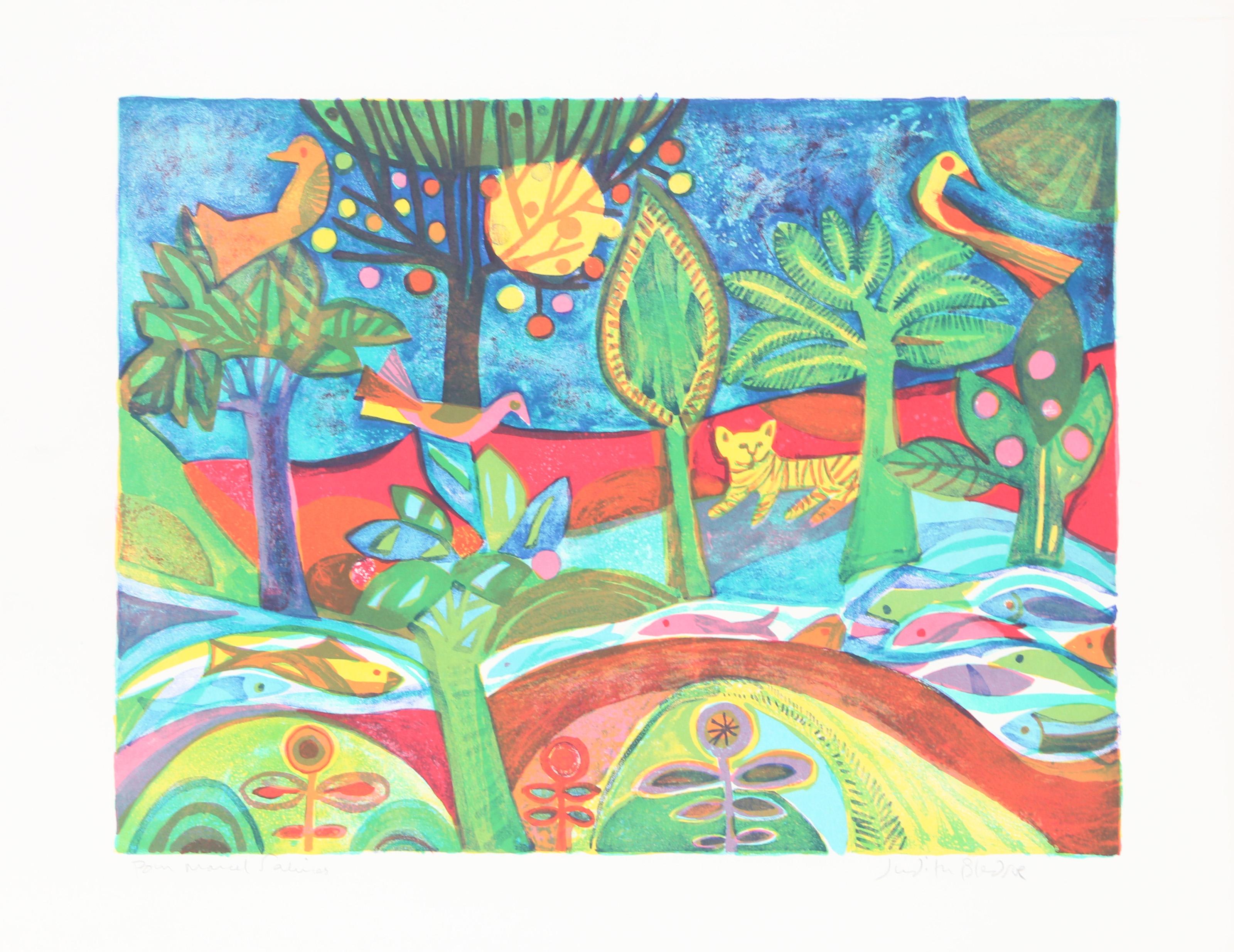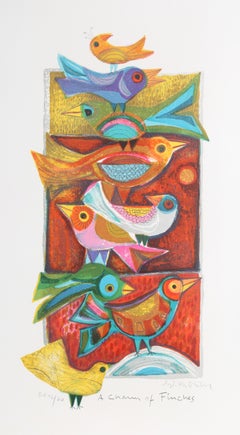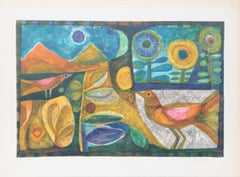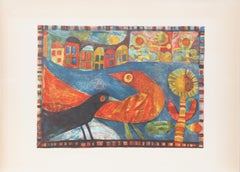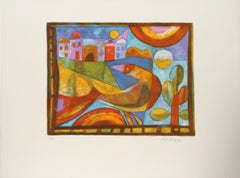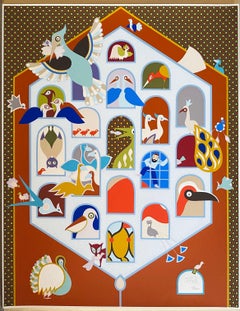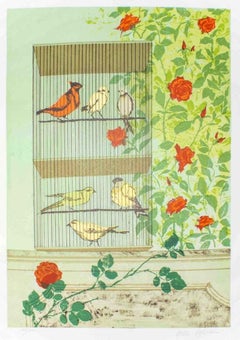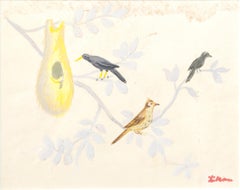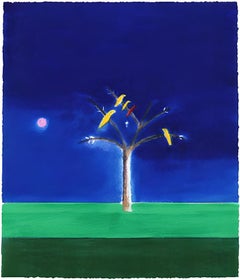Items Similar to Conversation Tree, Folk Art Lithograph by Judith Bledsoe
Want more images or videos?
Request additional images or videos from the seller
1 of 6
Judith BledsoeConversation Tree, Folk Art Lithograph by Judith Bledsoecirca 1980
circa 1980
$850
£659.59
€744.72
CA$1,216.27
A$1,327.17
CHF 686.64
MX$15,876.98
NOK 8,673.87
SEK 8,144.63
DKK 5,561.76
About the Item
Judith Bledsoe, American (1938 - 2013) - Conversation Tree. Year: circa 1980, Medium: Lithograph, signed in pencil, Edition: HC, Size: 34.5 x 22.5 in. (87.63 x 57.15 cm), Description: Perched throughout the tree, Judith Bledsoe's birds include a toucan, parrot, peacock, owl, and several other small songbirds. Posed throughout the green leafy tree, the birds are a common subject in the artist's work.
- Creator:Judith Bledsoe (1928, French)
- Creation Year:circa 1980
- Dimensions:Height: 34.5 in (87.63 cm)Width: 22.5 in (57.15 cm)
- Medium:
- Movement & Style:
- Period:
- Framing:Framing Options Available
- Condition:
- Gallery Location:Long Island City, NY
- Reference Number:Seller: RO686231stDibs: LU46614404922
About the Seller
4.9
Platinum Seller
Premium sellers with a 4.7+ rating and 24-hour response times
Established in 1979
1stDibs seller since 2014
3,166 sales on 1stDibs
Typical response time: 1 hour
- ShippingRetrieving quote...Shipping from: Long Island City, NY
- Return Policy
More From This Seller
View AllA Charm of Finches, Lithograph by Judith Bledsoe
By Judith Bledsoe
Located in Long Island City, NY
Judith Bledsoe, American (1938 - 2013) - A Charm of Finches. Year: circa 1974, Medium: Lithograph, signed and numbered in pencil, Edition: EA 46/60, Image Size: 13 x 8.5 inches, Siz...
Category
1970s Folk Art Prints and Multiples
Materials
Lithograph
Night Birds with Flowers, Lithograph by Judith Bledsoe
By Judith Bledsoe
Located in Long Island City, NY
Judith Bledsoe, American (1938 - 2013) - Night Birds with Flowers. Year: circa 1970, Medium: Lithograph, signed and dedicated in pencil, Edition: EA, Image Size: 17 x 25.5 inches, S...
Category
1970s Folk Art Prints and Multiples
Materials
Lithograph
Red Bird and Crow, Lithograph by Judith Bledsoe
By Judith Bledsoe
Located in Long Island City, NY
Judith Bledsoe, American (1938 - 2013) - Red Bird and Crow. Year: circa 1970, Medium: Lithograph, signed and dedicated in pencil, Edition: EA, Image Size: 15 x 21 inches, Size: 22 x...
Category
1970s Folk Art Prints and Multiples
Materials
Lithograph
A Bird's Day, Lithograph by Judith Bledsoe
By Judith Bledsoe
Located in Long Island City, NY
Judith Bledsoe, American (1938 - 2013) - A Bird's Day. Year: circa 1980, Medium: Lithograph, signed in pencil, Edition: EA, Image Size: 12 x 15.5 inches, Size: 18.5 x 25.5 in. (46.9...
Category
1980s Folk Art Prints and Multiples
Materials
Lithograph
An Exultation of Larks, Lithograph by Judith Bledsoe
By Judith Bledsoe
Located in Long Island City, NY
Judith Bledsoe, American (1938 - 2013) - An Exultation of Larks. Year: circa 1974, Medium: Lithograph, signed and numbered in pencil, Edition: EA 60/60, Image Size: 13 x 8.5 inches,...
Category
1970s Folk Art Prints and Multiples
Materials
Lithograph
Jungle, Lithograph by Judith Bledsoe
By Judith Bledsoe
Located in Long Island City, NY
Judith Bledsoe, American (1938 - 2013) - Jungle. Year: circa 1970, Medium: Lithograph, signed and dedicated in pencil, Edition: EA, Image Size: 15 x 20 inches, Size: 20 x 25.5 in. (...
Category
1970s Folk Art Prints and Multiples
Materials
Lithograph
You May Also Like
Israeli Naive Folk Art Birdhouse Silkscreen Lithograph David Sharir Birds
By David Sharir
Located in Surfside, FL
David Sharir was born in 1938 in Tel Aviv, Israel and currently resides there.
David Sharir, the son of Russian immigrants, was born in Israel. Beginning his study of art in Tel Aviv...
Category
20th Century Folk Art Figurative Prints
Materials
Screen
BIrds - Lithograph by Aldo Pagliacci - 1970s
By Aldo Pagliacci
Located in Roma, IT
Hand signed.
Edition of 130 copies (105/130).
Category
1970s Contemporary Animal Prints
Materials
Lithograph
"Three Perched Birds"
Located in Austin, TX
Watercolor piece depicting birds perched on a tree branch by Gustav Likan.
Watercolor on paper.
7" x 8.5"
Category
20th Century Animal Drawings and Watercolors
Materials
Watercolor, Archival Paper
Canaries on a Tree
Located in London, GB
Canaries on a Tree, 2003
Screenprint
Edition size: 300
Image and paper size: 28.5 x 24cm
hand-signed and numbered by the artist on verso
published by Advanced Graphics
accompanied by signed and numbered book (206/300) that matches the print's edition number.
Craigie Aitchison...
Category
Early 2000s Modern Animal Prints
Materials
Screen
Birds on a Branch original lithograph Dang Lebadang
By Dang Lebadong
Located in Paonia, CO
Birds on a Branch is a limited edition lithograph ( VI/XXI ) in excellent condition and is signed in pencil by the artist. Three blue and red birds sitting on a branch with a background in yellow and some black.
Dang Lebadang...
Category
20th Century Abstract Abstract Prints
Materials
Lithograph
Bird Tree, Original Painting
By Jessica JH Roller
Located in San Francisco, CA
Artist Comments
A spruce tree in the artist Jessica JH Roller’s front yard is a favorite of many birds. An Eastern Screech Owl spent the early summer months perched on a br...
Category
21st Century and Contemporary Contemporary Animal Paintings
Materials
Acrylic
More Ways To Browse
Folk Art Tree
1969 Music Poster
1984 Los Angeles Olympics
American Block Prints
Antique Occult
Aretha Franklin
Banana Vintage Print
Batman Print
Boac Poster
Boac Vintage Posters
Bucking Horse
Carlo Pellegrini
Chagall Jacob
Chagall Jerusalem Windows
Charles White Artist
Chartres Cathedral
Christmas Lithograph
Cote D Azur Vintage Posters
